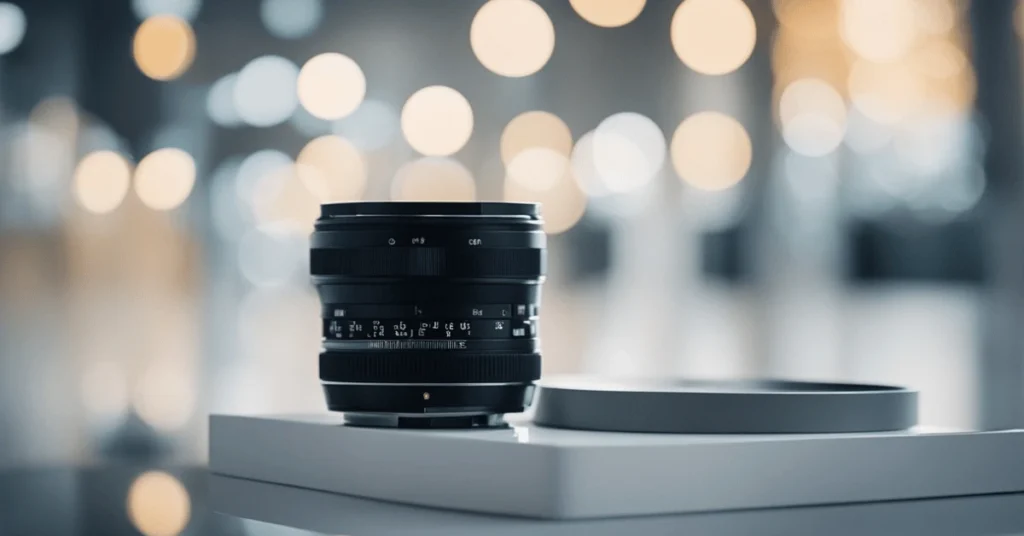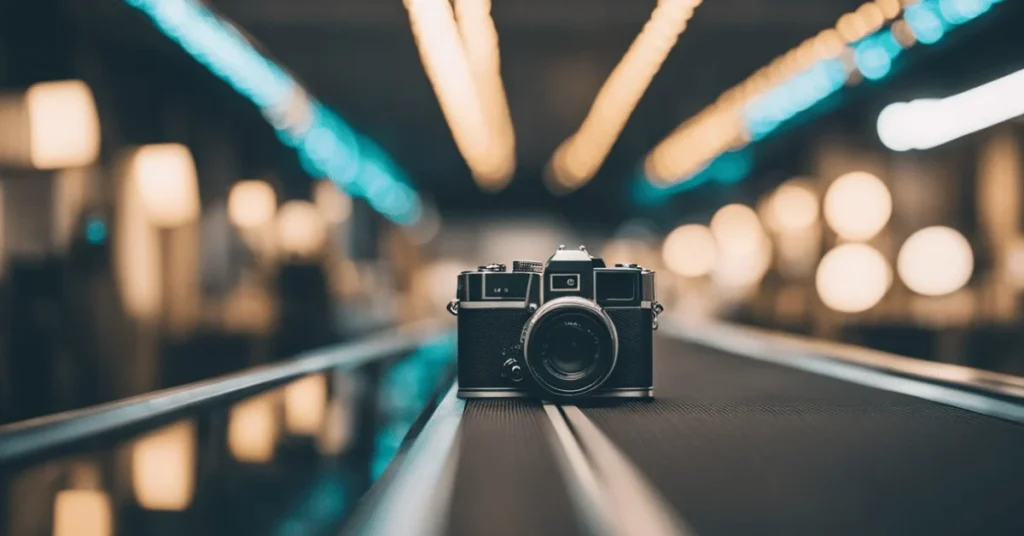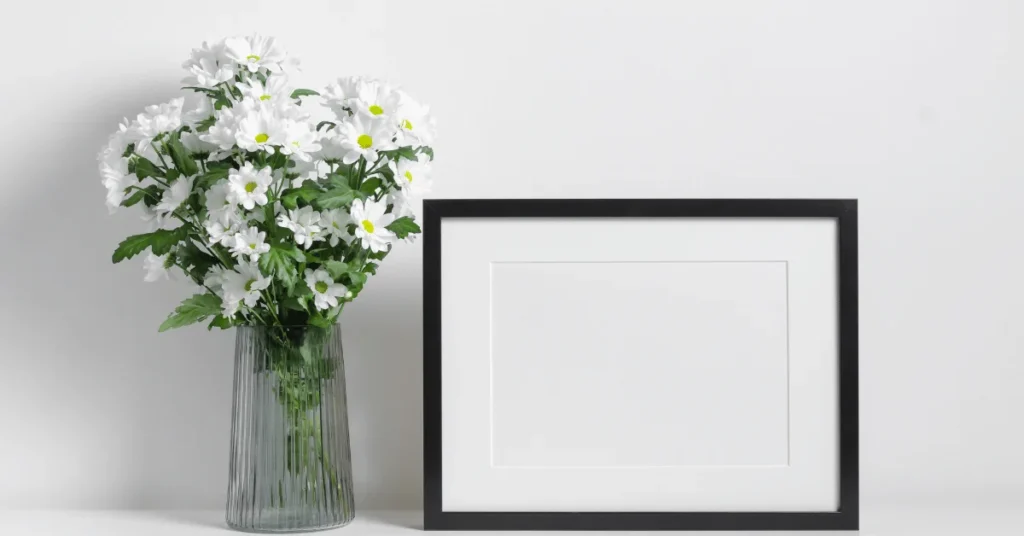Minimalist artists have revolutionized the art world with their unique approach to simplicity and reduction. In this article, we delve into the profound impact of minimalism across various art forms, tracing its global influence and legacy. Discover how these minimalist artists, with their focus on essential elements and viewer interaction, have shaped not only contemporary art but also architecture, fashion, and beyond. Embrace the world of minimalism and understand how its timeless principles continue to inspire and challenge our perception of art and design.
Key Takeaways:
- Minimalism was a reaction against the excesses of abstract expressionism, which was the dominant art form at the time.
- Minimalist art emerged in the late 1960s and is a movement that seeks to uncover the essence of a topic by removing any non-essential forms, characteristics, or ideas.
- Minimalist artists use simple geometric shapes, monochromatic colors, and a limited amount of materials to create their works of art.
- Pioneering minimalist artists were for example Frank Stella, Sol LeWitt, and Robert Morris
- The influence of minimalist artists extended beyond visual arts, shaping the realms of architecture, design, and even music, by promoting the ethos of ‘less is more’
- Minimalist artists played a crucial role in paving the way for subsequent art movements such as conceptual art, land art, and installation art
Origins of Minimalism
Minimalism is a primarily American movement that emerged in the late 1960s in response to the dominance of Abstract Expressionism in Western art. It is characterized by extreme simplicity of form and a literal, objective approach.
Minimalism is the culmination of reductionist tendencies in modern art that began with the Bauhaus movement in Germany in 1919. As an art school, it explored various minimalist painting ideas, crafts, design, and later architecture, focusing on ideas of functionality versus aesthetics.
In the United States, the origins of Minimalism can be traced back to the 1960s, a time when artists were moving away from the gestural, emotional style of Abstract Expressionism. Minimalism was a reaction against this style, as artists sought to reduce their work to its most basic elements.
Minimalist artists sought to create work that was stripped down to its essential elements, often using industrial materials and techniques. They focused on geometric shapes, simple forms, and a limited color palette.
Minimalism was part of a broader trend in modernism, which sought to strip away the excesses of previous art movements and focus on the essential elements of art. Minimalist artists rejected the idea of art as a means of personal expression, instead emphasizing the objectivity of their work.
Key Minimalist Artists

Many of the following artists have works on display at various museums around the world, including the Jewish Museum and the Tate. Their contributions to the minimalist movement have had a lasting impact on the art world, inspiring countless artists to explore the beauty of simplicity and minimalism. These are some of the most influential minimalist artists:
Donald Judd
Donald Judd was one of the primary figures in minimalist art. He rejected traditional painting and sculpture and instead created abstract sculptures that epitomized modern art. Judd’s works are characterized by their simple geometric shapes and use of industrial materials.
Frank Stella
Frank Stella, an American painter, played a pivotal role in the minimalism movement with his innovative, geometric compositions. Renowned for his “Black Paintings” series, Stella’s work is characterized by its simplicity, repetition, and emphasis on the physical properties of the materials used. His contributions to minimalism are marked by a departure from expressive content, focusing instead on the objective presence of the artwork itself, thereby reshaping the trajectory of modern art.
Sol Lewitt
Sol Lewitt, an influential American artist, made significant contributions to both Minimalism and Conceptual Art. He is best known for his “Wall Drawings,” where the emphasis is placed on the idea behind the artwork rather than its execution. LeWitt’s work often involves simple geometric shapes and patterns, exploring repetition and variation within a set of self-imposed constraints. His approach, prioritizing the concept over craftsmanship, fundamentally challenged traditional notions of art-making.
Robert Morris
Robert Morris was an American sculptor who is known for his minimalist sculptures. Known for his use of geometric forms and industrial materials, Morris’s work emphasized the spatial relationship between the artwork and the viewer. His pieces, often large and stark, challenge traditional notions of sculpture by focusing on simplicity and the physical presence of the objects in space. Morris’s influential writings on art theory and his experimental approach to materials and form have left a lasting impact on the world of minimalism art.
Dan Flavin
Dan Flavin, an American minimalist artist, was renowned for his innovative use of fluorescent light as a medium for art. His work, characterized by simple yet striking arrangements of colored lights, redefined the boundaries of sculpture and installation art. Flavin’s light installations, often geometric and linear, transformed spaces with their ethereal glow, creating immersive environments and altering perceptions of architecture.
Ellsworth Kelly
Ellsworth Kelly was a pivotal figure in the development of minimalism, known for his bold, colorful canvases that emphasized form and color over narrative. His work, often featuring simple geometric shapes and bright colors, played a significant role in pushing abstract art towards a more minimalistic aesthetic.
Richard Serra
Richard Serra is an influential minimalist sculptor, famous for his massive, site-specific steel installations. His work explores the relationship between viewer, site, and sculpture, often manipulating viewers’ perceptions of space and scale.
Carl Andre
Carl Andre, a prominent figure in minimalist sculpture, is known for his arrangements of industrial materials, such as bricks, metal plates, and wood. His floor pieces, which emphasize the horizontal plane and materiality, invite viewers to reconsider the space they inhabit.
Agnes Martin
Agnes Martin‘s work, characterized by subtle grids and muted colors, bridges the gap between abstract expressionism and minimalism. Her paintings, with their emphasis on line and simplicity, invoke a contemplative and introspective experience. Martin’s minimalist approach, focusing on repetition and subtle variation, has been influential in defining the aesthetic and philosophical underpinnings of the movement.
Anne Truitt
Anne Truitt was a pioneering minimalist artist known for her large, hand-painted wooden sculptures. Her work often featured simple, columnar forms and explored the interplay of color, shadow, and form. Truitt’s minimalistic columns and their exploration of color and geometric form have been key contributions to the minimalist dialogue.
Tony Smith
Tony Smith was a minimalist sculptor and architect. His large, geometric sculptures, often in black, engage with and transform their surrounding environment, encouraging viewers to interact with the art and space in new ways. Smith’s exploration of pure geometric forms and large-scale sculptures provided a new language for minimalism in three-dimensional space.
Eva Hesse
Eva Hesse, associated with both minimalism and postminimalism, was known for her innovative use of materials like latex, fiberglass, and plastic. Her sculptures challenge traditional notions of form and material, bringing a deeply personal and often fragile element to minimalism. Hesse’s incorporation of unconventional materials and exploration of form significantly expanded the boundaries of minimalist art.
Larry Bell
Larry Bell is celebrated for his minimalist glass sculptures and installations. His work, which often incorporates reflective and transparent materials, plays with light and perception, creating an immersive and dynamic viewer experience. Bell’s use of industrial materials and focus on light and space have been vital in shaping the aesthetic and conceptual framework of minimalism.
John McCracken
John McCracken‘s minimalist sculptures, characterized by highly polished, monochromatic planks, blur the line between painting and sculpture. His works, standing at an angle against the wall or directly on the floor, engage the viewer in a dialogue about space and form.
Robert Ryman
Robert Ryman‘s work, which primarily involves white paint on square canvases, focuses on the nuances of color, brushstroke, and support. His minimalistic approach challenges the viewer to find complexity and variation within apparent simplicity. Ryman’s dedication to the exploration of the fundamentals of painting has made him a key figure in the evolution of minimalist art.
Piet Mondrian
Piet Mondrian, a pioneer of abstract art, is best known for his De Stijl works featuring grids of black lines and primary colors. His reduction of visual elements to basic forms and colors laid the groundwork for the development of minimalism. Mondrian’s geometric abstraction and pursuit of spiritual harmony through art were foundational influences on minimalist aesthetics.
David Smith
David Smith. primarily known as an abstract expressionist sculptor, influenced minimalism through his simplified forms and exploration of industrial materials. His large-scale metal sculptures emphasize form, space, and the relationship between the artwork and its environment.
Kenneth Noland
Kenneth Noland was a prominent figure in Color Field painting, a movement closely related to minimalism. His works, often featuring simple shapes and bold colors, emphasize the flatness of the canvas and the purity of color. Noland’s focus on color and geometric forms contributed significantly to the development of a minimalist visual language.
Artistic Techniques and Styles

Sculpture
Minimalist sculptors often work with industrial materials such as steel, plywood, and plastic. They create simple geometric forms that emphasize the essence of the material. Sculptors such as Donald Judd and Carl Andre created works that were specific objects, designed to exist in a particular space and interact with the viewer.
Painting
Minimalist painters often use monochrome colors and simple geometric forms to create works that emphasize the clarity of their concept. Artists such as Frank Stella and Ellsworth Kelly created works that were often referred to as “black paintings” or “color field paintings.”
Drawing
Minimalist drawings often use simple, geometric forms to create abstract compositions. Artists such as Sol LeWitt created wall drawings that were often executed by others, emphasizing the concept of the work over the execution.
Photography
Minimalist photographers often use reduction and simplicity to create works that emphasize the beauty of their subject. Artists such as Hiroshi Sugimoto create landscape photographs that are often monochrome and focus on the essence of the subject.
Installation Art
Minimalist installation art often uses specific objects to create works that interact with the viewer and the space they are in. Artists such as Dan Flavin create works that use light and space to create an immersive experience for the viewer.
Land Art
Minimalist land artists often use natural materials such as rocks and earth to create works that interact with the landscape they are in. Artists such as Robert Smithson created works that were often site-specific and emphasized the concept of the work over its physical form.
Hard-Edge Painting
Hard-edge painting is a form of minimalism that uses precise, geometric forms and flat, unmodulated color. Artists such as Kenneth Noland and Al Held created works that were often large in scale and emphasized the relationship between color and form.
Color Field Painting
Color field painting is a form of minimalism that uses large areas of flat, unmodulated color to create works that emphasize the beauty of color itself. Artists such as Mark Rothko and Barnett Newman created works that were often large in scale and created an immersive experience for the viewer.
Light and Space Movement
The Light and Space movement is a form of minimalism that uses light and space to create works that emphasize the viewer’s experience of the work. Artists such as James Turrell create works that use light and space to create an immersive experience for the viewer.
Geometric Abstraction
Geometric abstraction is a form of minimalism that uses simple, geometric forms to create abstract compositions. Artists such as Kazimir Malevich and Piet Mondrian created works that were often referred to as “primary structures” and emphasized the relationship between form and color.
Shaped Canvas Art
Shaped canvas art is a form of minimalism that uses irregularly shaped canvases to create works that emphasize the relationship between the work and the space it is in. Artists such as Frank Stella and Ellsworth Kelly created works that were often irregularly shaped and emphasized the essential qualities of their medium.
Influence and Legacy

Minimalism had a profound influence on various art forms, including music, architecture, and fashion. Minimalist artists moved their art out of museums into lofts, galleries, and other nontraditional spaces as part of their rejection of the entire high-art aesthetic of abstract expressionism. Emerging in the 1960s, minimalism had become so popular by the 1970s that it entered the mainstream.
Minimalist artists were influenced by post-painterly abstraction, a movement that emphasized the use of color, line, and shape over gesture and texture. Barnett Newman, a key figure of the movement, was known for his “zip” paintings, which featured vertical lines that divide the canvas. Minimalist artists also drew inspiration from site-specific installations, which were designed to interact with the architecture and environment of a specific location.
Minimalism’s legacy can be seen in the Light and Space movement, which emerged in the 1960s and 1970s in Southern California. Light and Space artists used light, color, and space to create immersive installations that altered the viewer’s perception of their surroundings. Minimalism also influenced geometric abstraction, a movement that emphasized the use of simple geometric forms.
Contemporary artists continue to be influenced by minimalism, with many exploring themes of identity and autonomy. Minimalism’s focus on simplicity and reduction has also influenced the field of architecture, with architects using minimalism to create buildings that emphasize functionality and form over ornamentation.
Minimalism in Global Perspective

Minimalism is a movement that has gained popularity worldwide, with artists from different parts of the world contributing to its growth. While the concept of minimalism has its roots in Western art, it has evolved over the years and has been influenced by various cultures across the globe. In this section, we will explore the impact of minimalism in different regions of the world.
Asia
Asia has a rich history of minimalism, with Japan being one of the leading countries in this field. Japanese minimalist artists like Oki Sato and his design studio, Nendo, have gained international recognition for their work. Their creations are a perfect blend of simplicity and functionality, which is a hallmark of minimalism.
Other countries in Asia have also contributed to the growth of minimalism. Chinese artist, Ai Weiwei, is known for his minimalist sculptures and installations that challenge the status quo. Indian artist, Nasreen Mohamedi, is another notable minimalist who is known for her abstract drawings and photographs.
Europe
Minimalism has its roots in Europe, with artists like Kazimir Malevich and Piet Mondrian being pioneers of the movement. Malevich’s “Black Square” and Mondrian’s “Composition with Yellow, Blue, and Red” are iconic works of art that exemplify the principles of minimalism.
Artists like Dan Flavin and Donald Judd have also contributed to the growth of minimalism. Flavin’s use of fluorescent light as a medium and Judd’s minimalist sculptures have inspired generations of artists.
North America
Minimalism gained popularity in North America in the 1960s, with artists like Frank Stella and Sol LeWitt leading the movement. Stella’s “Black Paintings” and LeWitt’s “Wall Drawings” are examples of minimalist art that have become synonymous with the movement.
Other notable minimalist artists from North America include Carl Andre, Robert Morris, and Agnes Martin. Andre’s minimalist sculptures, Morris’s geometric shapes, and Martin’s abstract paintings have all contributed to the growth of minimalism in the region.
Minimalism is a movement that has transcended borders and has gained popularity worldwide. Artists from different parts of the world have contributed to its growth, and its impact can be seen in various fields of art and design.
Minimalism and Other Art Movements

One of the key differences between minimalism and other art movements is its focus on the viewer’s experience of the artwork. Minimalist artists sought to create an interaction between the artwork and the viewer, often through the use of repetition and simple forms. This focus on the viewer’s experience is one of the reasons why minimalism has remained popular to this day.
Minimalism also had an impact on other art movements. For example, it influenced the development of conceptual art, which emphasized the idea behind the artwork rather than the artwork itself. Minimalism also had an impact on sculpture, particularly through the work of artists like Donald Judd and Dan Flavin.
While minimalism was a reaction against the abstract expressionist movement, it also had similarities to other art movements. For example, it shared some of the same concerns as post-painterly abstraction, such as the use of color and flatness. However, minimalism took these concerns further by reducing art to its most basic elements.
Minimalism in Contemporary Art

Minimalism is a style of art that emerged in the 1960s and is still prevalent in contemporary art today. It is characterized by the use of simple, geometric forms, a limited color palette, and a focus on the materials and process of creating the artwork. Minimalist artists aim to create works that are stripped down to their essential elements, emphasizing the purity and simplicity of the form.
Contemporary artists continue to explore and push the boundaries of minimalism. Some of the most prominent minimalist artists working today include Olafur Eliasson, Dan Flavin, and Donald Judd. These artists create works that challenge our perceptions of space, light, and form.
The Solomon R. Guggenheim Museum in New York City is one of the most important institutions for contemporary art. Its collection includes works by many minimalist artists, including Agnes Martin, Robert Ryman, and Richard Serra. The museum’s Rotunda is also a prime example of minimalist architecture, with its spiraling ramp and clean lines.
Contemporary minimalism is not limited to visual art. Minimalist principles can be found in music, literature, and even fashion. The minimalist movement has had a significant impact on contemporary culture, influencing everything from product design to interior decorating.
FAQ

Who are some famous American Minimalist artists?
Some of the most famous American Minimalist artists include Carl Andre, Dan Flavin, Donald Judd, Sol LeWitt, and Robert Morris. These artists were pioneers of the Minimalism movement in the 1960s and 1970s.
What is the Minimalism movement in art?
The Minimalism movement in art is a visual art and design movement that focuses on the primary elements of an artwork. It emerged in the late 1950s and early 60s as a reaction against the dominant style of Abstract Expressionism. Minimalist artists sought to reduce their works to the most essential elements, often using simple geometric forms and industrial materials.
What is the style of Die Fahne hoch by Frank Stella?
Die Fahne hoch is a painting by Frank Stella that is associated with Minimalism. The painting features a series of black stripes on a white background, arranged in a way that creates a sense of movement and depth. Stella’s use of simple geometric forms and monochromatic color schemes is characteristic of Minimalist art.
What were the two main focuses of Minimalist artists?
Minimalist artists focused on two main elements in their work: form and material. They sought to reduce their works to the most basic forms and to use industrial materials that were readily available. By doing so, they aimed to create works that were free from any extraneous details or emotional content.
Which famous paintings are associated with Minimalist artists?
Some of the most famous paintings associated with Minimalist artists include Sol LeWitt’s Wall Drawing #118, Donald Judd’s Untitled (Stack), and Dan Flavin’s fluorescent light installations. These works are characterized by their use of simple geometric forms and industrial materials.
Who are some notable Japanese Minimalist artists?
Some notable Japanese Minimalist artists include Tadaaki Kuwayama, Nobuo Sekine, and Kishio Suga. These artists were part of the Mono-ha movement, which emerged in Japan in the late 1960s and early 70s. Mono-ha artists sought to explore the relationship between natural and industrial materials, often creating large-scale installations that emphasized the physical properties of their materials.
From Donald Judd’s geometric sculptures to Piet Mondrian’s iconic color blocks, these artists have redefined our perception of art and space.
But now, we turn to you! What are your thoughts on minimalist art? Have you ever been deeply moved by the simplicity of a piece, or do you incorporate elements of minimalism in your own artistic endeavors?
Share your experiences, favorite minimalist artists, or even your own minimalist creations in the comments below.


